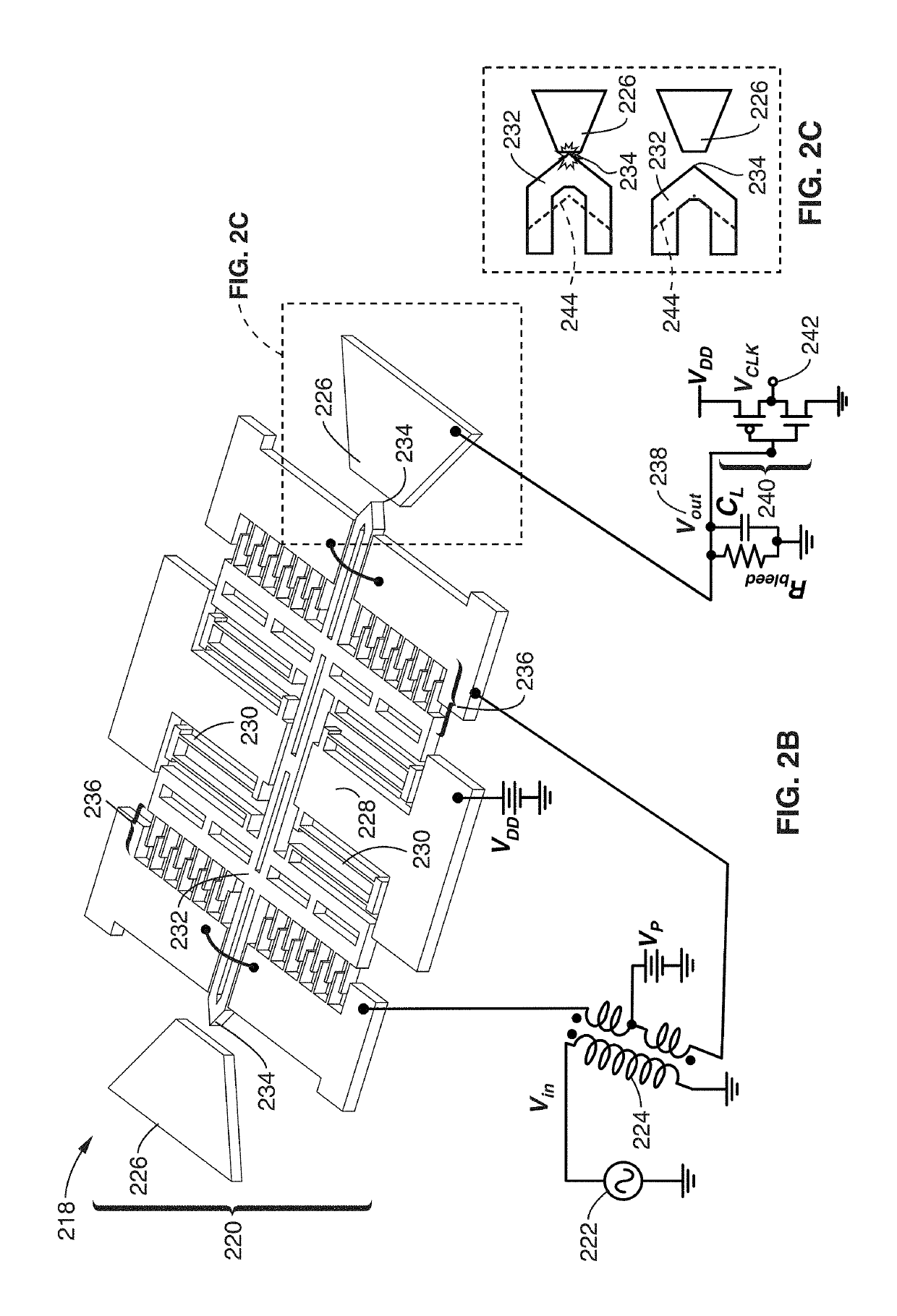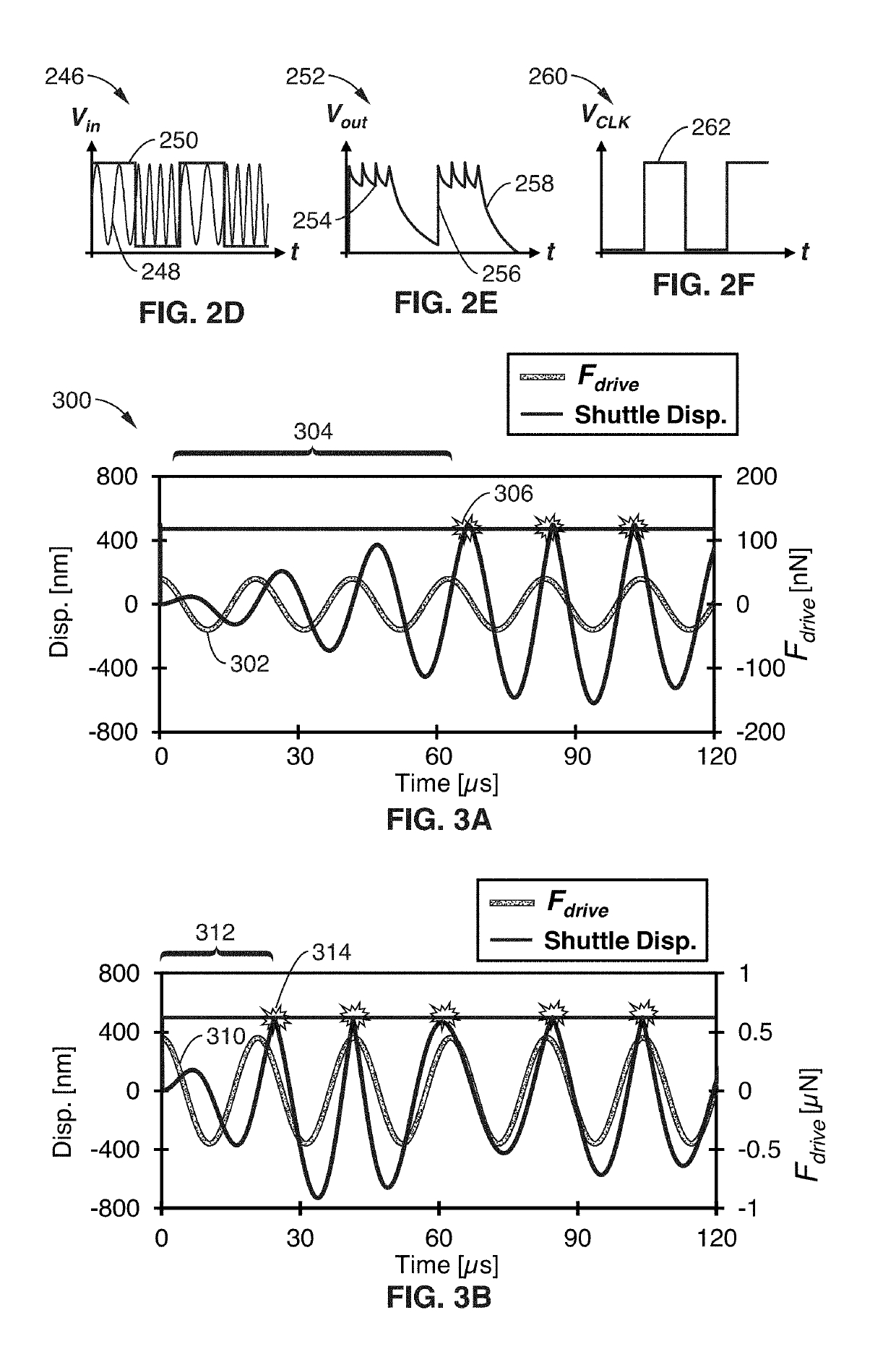Rf-powered micromechanical clock generator
a micromechanical clock and generator technology, applied in the direction of electric pulse generator details, pulse manipulation, pulse technique, etc., can solve the problems of high accuracy clock signals that are not readily available at low power, subject to thermal drift, vibration, and energy. likely to pose a major constrain
- Summary
- Abstract
- Description
- Claims
- Application Information
AI Technical Summary
Benefits of technology
Problems solved by technology
Method used
Image
Examples
Embodiment Construction
1. Introduction
[0068]The widespread expectation that autonomous sensor networks will fuel massively accessible information technology, such as the Internet of Things (IoT), comes with the realization that huge numbers of sensor nodes will be required, perhaps approaching one trillion. Needless to say, besides cost, energy will likely pose a major constraint in such a vision. If sleep / wake strategies can adequately limit a given node's sensor and wireless power consumption, the power bottleneck then concentrates on the real-time clock (RTC) that synchronizes sleep / wake cycles.
[0069]With typical RTC battery consumption on the order of 1 μW, a low-cost printed battery with perhaps 1 J of energy would last only 11.5 days. On the other hand, if a clock could bleed only 10 nW from this battery, it would last 3 years.
[0070]Pursuant to attaining such a clock, this technology explores a wireless approach that eliminates conventional closed-loop positive feedback design to realizing an RTC (a...
PUM
 Login to View More
Login to View More Abstract
Description
Claims
Application Information
 Login to View More
Login to View More - R&D
- Intellectual Property
- Life Sciences
- Materials
- Tech Scout
- Unparalleled Data Quality
- Higher Quality Content
- 60% Fewer Hallucinations
Browse by: Latest US Patents, China's latest patents, Technical Efficacy Thesaurus, Application Domain, Technology Topic, Popular Technical Reports.
© 2025 PatSnap. All rights reserved.Legal|Privacy policy|Modern Slavery Act Transparency Statement|Sitemap|About US| Contact US: help@patsnap.com



